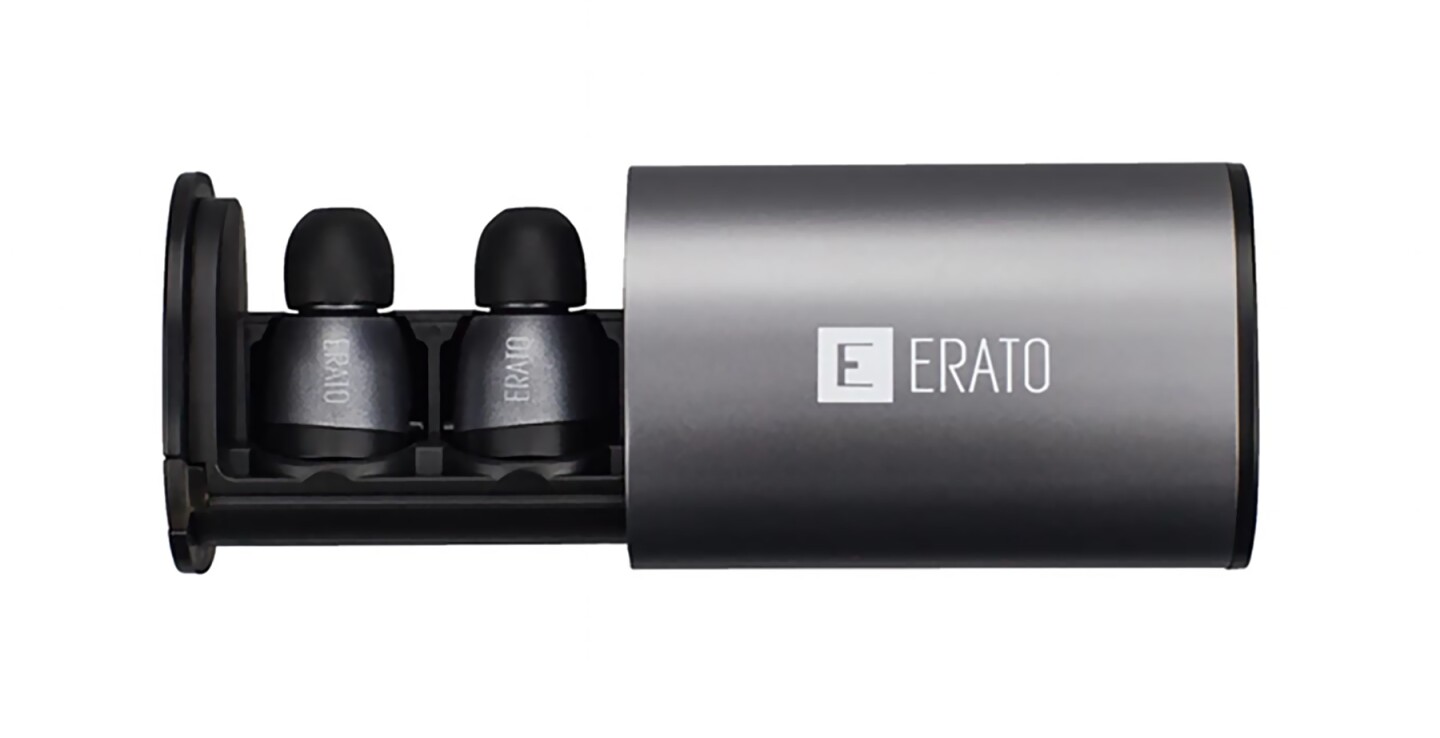Between Bluetooth, Wi-Fi, NFC, Qi wireless charging and someday possibly Li-Fi, there may very well come a day when kids look back on the 2010's and say, "Can you believe they actually used to use wires?". Certainly one of the more fun aspects of the wireless revolution has been the increasing availability and quality of Bluetooth headphones.
While those abound, high-quality stand-alone earbuds – meaning those that are not connected to a housing or any other cables – have been a bit slower to evolve. But they're coming, as evidenced by our review last year of the Earins buds. And if the Earins and the upcoming Apollo 7 set from Erato are any gauge, they're certainly something to look forward to.
The Apollo 7 buds are small and powerful. They each measure about 15.4 X 22.2 mm (about .6 x .9 inches) and weigh only 4 grams (about .14 ounces). Considering their size, they pump out truly impressive sound. In our tests, we couldn't even get the volume cranked to its max for fear our ear drums would rupture.

Of course, volume isn't the only criteria for evaluating earphones, and in sound quality, the Apollo 7s stood out as well. We put them through a range of musical genres and they were able to handle the booming bass of dance tracks, the high-end twang of bluegrass and the rich complexity of classical equally well. The sound is superbly balanced between high, low and mid range, and the bass is truly astounding considering that all the electronics and acoustic elements are packed into such a small form factor.
Equally impressive is that the Apollo 7s also manage to pack a microphone into that little bit of space. Taking a call is as simple as tapping one of the buttons on the buds. In our tests, the incoming voice was perfectly clear. The outgoing voice sounded a little remote, likely due to the distance the buds are away from the mouth, but the call was definitely highly acceptable – especially considering you don't have to have an obtrusive hunk of tech hanging out of your ear.

Pairing the buds was also a smooth process. You simply insert them, press the button on one of the buds until you hear "pairing," turn the other one on until you hear "headset connected." That means the buds are synced with each other and can then be paired to any Bluetooth-enabled device. The buttons also serve to pause the music with a single tap as well as to control the volume; a double tap on the right bud raises the sound, while double-tapping the left bud lowers it. Other tap combinations skip forward and back through your playlist.
The buttons can also be used to activate Siri on iOS devices or Google voice assistant on Android devices when music isn't playing, and the functionality of this feature also worked well in our tests.

Erato says the buds have a range of 30 feet (9 m) and that was just about right in our tests. They began to cut out around 27 feet, but there were some obstructions in the way. They're definitely going to work fine with your phone in a pocket or briefcase nearby.
Adding to the minimalist ethos of these buds is the charging case. Measuring only 2.5 x 1.5 x 1 inches, the case easily fits in a pocket. The earbuds snap into their own slots inside and don't need to be in any particular position to be charged. The case provides pass-through charging when it's connected to an outlet via micro-USB and it also holds it own charge via an onboard 300-mAh battery. Speaking of batteries, each bud contains a 50-mAh battery that's good for about four hours of music playback or three hours of talk.
As if all that wasn't impressive enough, the Apollo 7s are sweat- and water-resistant, although the user's manual does say that if they get wet, you should use a hair dyer for 20 minutes to dry them out or place them in a cool dry container for 24 hours, so this clearly isn't a big selling feature.
As for negatives, we did have a hard time getting the buds to fit comfortably. Despite a range of bud covers, it was a bit tricky to get them settled in our ears just right. Things got better the more we got used to them but, unlike some other buds, the stems on these seem a bit bigger, so you might find yourself fiddling with them quite a bit for a good fit. That being said, the sound quality was so good that even if they weren't all snug in the ear opening, they still delivered in a pleasing way.

Also our Apollo 7s were beta versions, and they did have a hard time connecting to the Galaxy Note 3 we paired them with. They'd connect, but the left bud would cut in and out. The manufacturers say this is a known Android glitch that will be fixed before the buds are distributed. The earphones worked perfectly well with our iPad Air 2 and an older iPhone 4.
The Apollo 7s launched via Kickstarter today and, if all goes well, they'll ship in June. It's always a good sign when a crowdfunding campaign can send out evaluation samples, but the usual cautions about pledging funds to a Kickstarter project apply. Right now a pair of the Apollo 7s can be had for the early bird price of US$250. After that, they begin to climb closer to the expected retail price of $299.
Product page: Kickstarter









![The Ti EDC [everyday carry] Wrench is currently on Kickstarter](https://assets.newatlas.com/dims4/default/0ba225b/2147483647/strip/true/crop/4240x2827+0+3/resize/720x480!/quality/90/?url=http%3A%2F%2Fnewatlas-brightspot.s3.amazonaws.com%2F59%2Fb2%2F6a6fdd0348a8bfdad88bbcefec53%2Fdsc03572.jpeg)